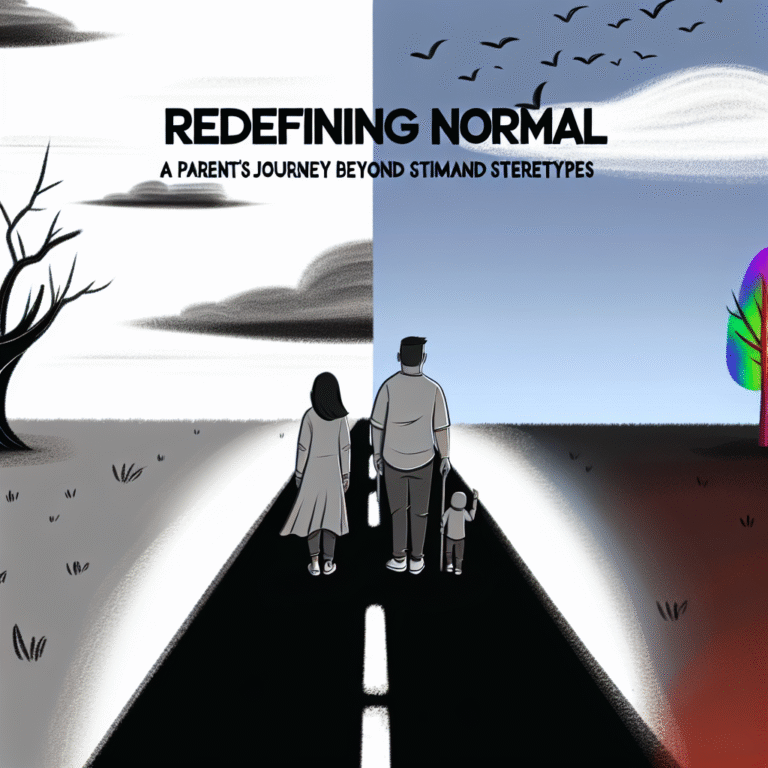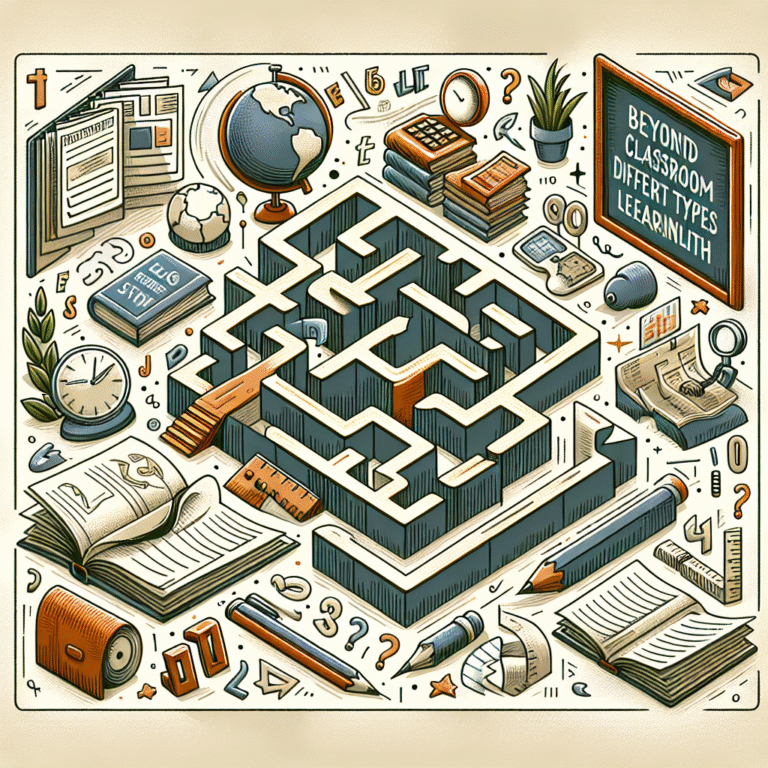The Skills Gap: Addressing Career Readiness for Job Seekers with Learning Disabilities
Introduction
In today’s rapidly changing job market, the skills gap presents a significant barrier for many job seekers, particularly those with learning disabilities. As industries evolve and technological advancements reshape work environments, the need for employees who are not only skilled but also adaptable has reached unprecedented levels. However, many career-ready candidates with learning disabilities find themselves underprepared, facing unique challenges that can hinder their job-seeking efforts.
This article delves into the intricacies of The Skills Gap: Addressing Career Readiness for Job Seekers with Learning Disabilities, offering insights, case studies, and actionable recommendations aimed at bridging this gap effectively.
Understanding the Skills Gap
What is the Skills Gap?
The skills gap refers to the disparity between the skills that employers need and the skills that job seekers possess. This gap can stem from various factors, including educational deficiencies, training limitations, and the rapid pace of technological change. Job seekers with learning disabilities often face an even wider gap due to a lack of tailored educational approaches, resources, and support.
Why Does the Skills Gap Matter?
An unaddressed skills gap can hurt employers, employees, and the economy. For employers, it results in decreased productivity and increased turnover costs. For job seekers with learning disabilities, it leads to frustration, underemployment, and a lack of advancement opportunities. Thus, effectively addressing the skills gap is crucial not only for individual growth but also for the overall health of various industries.
The Unique Challenges for Job Seekers with Learning Disabilities
Navigational Hurdles in Job Searching
Job seekers with learning disabilities often encounter specific obstacles that can complicate their career readiness. These can include:
Limited Access to Information: Many resources are not designed with the needs of individuals with learning disabilities in mind, making it hard for them to navigate job search platforms and educational materials.
- Social Stigma: Misunderstanding and stigma surrounding learning disabilities can lead to biases in hiring processes, discouraging individuals from pursuing roles for which they are qualified.
Case Study: Sam’s Journey
Sam, a young adult with dyslexia, struggled to present his qualifications effectively in job interviews. His resume was strong, yet he found it difficult to communicate his skills verbally under pressure. After participating in a specialized career readiness program that emphasized soft skills and effective communication, Sam secured an internship with a tech firm. This case illustrates the potential for targeted support to enhance career readiness.
The Role of Education
Many educational institutions have incorporated inclusive practices to better prepare students with learning disabilities for the workforce. However, there is still a need for more comprehensive programs focusing on practical skill application. A report from the National Center for Learning Disabilities shows that only 1 in 3 students with learning disabilities feel adequately prepared for the job market upon graduation.
Chart: Employment Statistics by Disability Type
| Disability Type | Employment Rate (%) | Job Retention Rate (%) |
|---|---|---|
| Learning Disabilities | 36 | 78 |
| Physical Disabilities | 41 | 85 |
| Mental Health Disorders | 28 | 65 |
Bridging the Gap: Skills Development Programs
To tackle The Skills Gap: Addressing Career Readiness for Job Seekers with Learning Disabilities, numerous organizations have initiated skills development programs. These initiatives often focus on a mix of hard and soft skills, offering tailored support suited to individual needs.
Highlight: Project SEARCH
One such program worth noting is Project SEARCH, which provides work experience and skill training for students with disabilities. The program collaborates with local businesses, allowing participants to gain real-world experience while receiving mentorship. By emphasizing hands-on training and workplace integration, programs like Project SEARCH can transform the employment landscape for job seekers with learning disabilities.
Fostering Inclusivity in the Workforce
Employer Responsibilities
Employers play a pivotal role in closing the skills gap for job seekers with learning disabilities. By fostering an inclusive workplace culture, companies can leverage the unique perspectives and skills of diverse talent.
Practical Steps for Employers:
- Implement Inclusive Hiring Practices: Modify job descriptions and application processes to be more welcoming and accessible.
- Training for HR and Hiring Managers: Provide training that raises awareness about learning disabilities and empowers staff to support diverse needs.
- Mentorship and Support: Establish mentorship programs that pair new employees with seasoned professionals who can provide guidance and advocacy.
Case Study: The Inclusion Initiative
One notable example is a tech company that launched "The Inclusion Initiative," aimed at hiring individuals with learning disabilities. After implementing training programs and mentorship opportunities, the company reported a 30% increase in employee satisfaction and retention rates. This success exemplifies the benefits of investing in inclusivity and the potential to significantly reduce the skills gap.
Building Support Networks
The Importance of Advocacy Groups
Organizations and advocacy groups play a critical role in supporting job seekers with learning disabilities. They help by:
- Providing Resources: Offering job readiness workshops, resume-building tools, and interview coaching tailored specifically for people with learning disabilities.
- Facilitating Connections: Connecting job seekers with potential employers willing to accommodate their needs.
Popular Organizations to Consider:
- Learning Disabilities Association of America (LDA): Provides resources and advocacy for individuals with learning disabilities.
- Job Accommodation Network (JAN): Offers free consulting services to help employers and employees navigate workplace accommodations.
The Role of Technology in Bridging the Skills Gap
Skills Assessment Tools
Emerging technologies are revolutionizing how we assess skills. AI-driven platforms can provide personalized assessments that identify strengths and areas for improvement tailored to job seekers with learning disabilities.
Online Learning Platforms
Platforms such as Coursera, Udemy, and Khan Academy offer flexible learning options that can help bridge the skills gap. These courses allow individuals with learning disabilities to learn at their own pace, focusing on the skills required for various careers.
Conclusion
The Skills Gap: Addressing Career Readiness for Job Seekers with Learning Disabilities is an urgent topic that demands attention from educators, employers, and policymakers alike. By acknowledging the unique challenges faced by this demographic and implementing strategic interventions, we can create a more inclusive job market.
Various methods—from enhanced educational programs and inclusive hiring practices to technological innovations—can empower job seekers with learning disabilities to thrive. It’s crucial to foster an environment that celebrates diversity and opens new doors for individuals who often go overlooked.
Inspirational Takeaway
As we advocate for a more equitable workforce, let’s remember that the skills and talents of job seekers with learning disabilities are not limitations but opportunities for innovation and progress. By working together, we can bridge the gap, ensuring that everyone has a fair shot at achieving their career aspirations.
FAQs
1. What is the skills gap in relation to job seekers with learning disabilities?
The skills gap refers to the difference between the skills that employers need and those that job seekers, particularly those with learning disabilities, possess. This gap can hinder employment opportunities for those individuals.
2. How can employers support individuals with learning disabilities?
Employers can provide training, adapt hiring practices, and establish mentorship programs to create a more inclusive workplace.
3. What educational resources are available for job seekers with learning disabilities?
Numerous organizations offer workshops, online courses, and job readiness programs tailored to meet the needs of individuals with learning disabilities.
4. How can technology assist in bridging the skills gap?
Technology, including AI-driven skills assessments and online learning platforms, can provide tailored resources and flexible learning opportunities for job seekers with learning disabilities.
5. Why are soft skills important for job seekers with learning disabilities?
Soft skills such as communication, teamwork, and adaptability are essential as they enhance employability and job performance, helping candidates effectively integrate into the workforce.
By understanding and addressing The Skills Gap: Addressing Career Readiness for Job Seekers with Learning Disabilities, we can unlock the potential of diverse talent and pave the way for a brighter, more inclusive future.













